Posted on May 10th, 2010 by ASEE
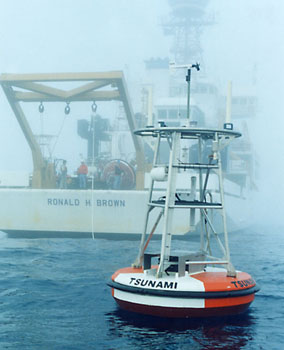 The Website of the Office of Oceanic and Atmospheric Research, or NOAA Research, has helpful information for teachers on oceans, Great Lakes, and coasts, climate, and weather and air quality, including a page of education resources, and an 18-minute video, “Dynamic Science,” that explains the work of the National Office. Bring students to the site to read about ocean mapping, the tsunamic research program, and NOAA’s work with hydroculture and fisheries.
The Website of the Office of Oceanic and Atmospheric Research, or NOAA Research, has helpful information for teachers on oceans, Great Lakes, and coasts, climate, and weather and air quality, including a page of education resources, and an 18-minute video, “Dynamic Science,” that explains the work of the National Office. Bring students to the site to read about ocean mapping, the tsunamic research program, and NOAA’s work with hydroculture and fisheries.
Read More
Filed under: Web Resources | Comments Off on Website: Oceanic and Atmospheric Research
Tags: Ocean, Weather
Posted on May 10th, 2010 by ASEE

If all burning of fossil fuels were to cease tomorrow, the build-up of greenhouse gases in the Earth’s atmosphere is still severe enough that in 2100, we are still looking at a world at least several degrees warmer than during the pre-industrial era. That warming brings with it certain hazards – droughts, the spread of infectious diseases, the extinction of species. One hazard in particular will require an engineering response: the rise of sea levels.
Read More
Filed under: Special Features | 1 Comment »
Tags: Climate Change, Marine engineering, Ocean, Water management, Water Resources
Posted on May 10th, 2010 by ASEE
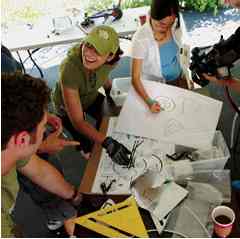 This online workshop was developed by NASA and PBS’s DESIGN SQUAD for educators and afterschool leaders who want to build skills and confidence in guiding students through engineering activities. Participants gain strategies for strengthening kids’ critical-thinking abilities and getting them excited about using the design process–the series of steps engineers use to arrive at solutions.
This online workshop was developed by NASA and PBS’s DESIGN SQUAD for educators and afterschool leaders who want to build skills and confidence in guiding students through engineering activities. Participants gain strategies for strengthening kids’ critical-thinking abilities and getting them excited about using the design process–the series of steps engineers use to arrive at solutions.
Read More
Filed under: Web Resources | Comments Off on Online Workshop: Engineering Design Process
Tags: Design, Engineering Design Process, NASA, PBS, Web Resources
Posted on May 10th, 2010 by ASEE
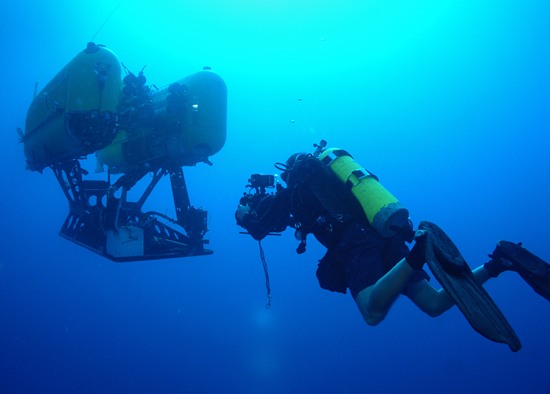 The Woods Hole Oceanographic Institution website offers an excellent range of materials, from blogs and online engagement with ongoing research projects to visual images; audio, video, and simulation programs; flash interactives; webcams; and puzzles — all focused upon oceanographic research. Separate “Teaching and Learning” pages for students and teachers offer more online material, as well as notice of upcoming programs and workshops.
The Woods Hole Oceanographic Institution website offers an excellent range of materials, from blogs and online engagement with ongoing research projects to visual images; audio, video, and simulation programs; flash interactives; webcams; and puzzles — all focused upon oceanographic research. Separate “Teaching and Learning” pages for students and teachers offer more online material, as well as notice of upcoming programs and workshops.
Read More
Filed under: Web Resources | Comments Off on Website: Ocean Exploration with Woods Hole
Tags: Ocean
Posted on May 10th, 2010 by ASEE
 Southeast Coastal Ocean Observing Research Association (SECOORA) provides several resources for educators and students, including videos of interviews with scientists, posters, activities, glossaries, virtual models, surveys, links to outside web resources, a hurricane tracking chart, a matching game, PowerPoint presentations, class materials, real time data, a teacher workshop, a research cruise, lesson plans, and more.
Southeast Coastal Ocean Observing Research Association (SECOORA) provides several resources for educators and students, including videos of interviews with scientists, posters, activities, glossaries, virtual models, surveys, links to outside web resources, a hurricane tracking chart, a matching game, PowerPoint presentations, class materials, real time data, a teacher workshop, a research cruise, lesson plans, and more.
Read More
Filed under: Web Resources | Comments Off on Website: SECOORA
Tags: Curriculum, Internet Resources, Ocean, Science materials, Web Resources
Posted on May 10th, 2010 by ASEE
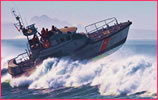 The ocean’s awesome power is never more apparent when the surf’s up or a coastal storm is brewing. But did you know that engineers are busily seeking ways to harness that might as a means for producing alternative sources of energy? Here is an overview of three different projects, compiled from recent news items in ASEE’s Prism magazine.
The ocean’s awesome power is never more apparent when the surf’s up or a coastal storm is brewing. But did you know that engineers are busily seeking ways to harness that might as a means for producing alternative sources of energy? Here is an overview of three different projects, compiled from recent news items in ASEE’s Prism magazine.
Read More
Filed under: Special Features | Comments Off on Feature: Catch the Wave
Tags: Marine engineering, Ocean
Posted on May 10th, 2010 by Jaimie Schock
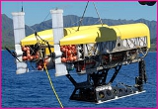 Woods Hole Oceanographic Institution‘s hybrid, remotely operated vehicle Nereus is exploring the oceans’ deepest depths. It works in two modes: as a free-swimming, autonomous robot that surveys wide areas of the deep sea and as a vehicle linked to a surface ship via a fiber-optic cable that transmits data and images up and sends commands down. The Woods Hole website features an interactive tour of the robot, videos, a slideshow, and related news.
Woods Hole Oceanographic Institution‘s hybrid, remotely operated vehicle Nereus is exploring the oceans’ deepest depths. It works in two modes: as a free-swimming, autonomous robot that surveys wide areas of the deep sea and as a vehicle linked to a surface ship via a fiber-optic cable that transmits data and images up and sends commands down. The Woods Hole website features an interactive tour of the robot, videos, a slideshow, and related news.
Read More
Filed under: Web Resources | Comments Off on Website: Nereus, the Oceanic Robot Hybrid
Tags: Ocean, Robotics, Website
Posted on May 10th, 2010 by Jaimie Schock
 A recent survey of 1,000 students ages 12 to 17 conducted for Junior Achievement and the Allstate Foundation found that 63 percent of respondents admitted that tight finances have forced them to change their college plans. How? By working more hours, opting for instate schools, delaying enrollment for a year or going to a community college.
A recent survey of 1,000 students ages 12 to 17 conducted for Junior Achievement and the Allstate Foundation found that 63 percent of respondents admitted that tight finances have forced them to change their college plans. How? By working more hours, opting for instate schools, delaying enrollment for a year or going to a community college.
Read More
Filed under: K-12 Education News | Comments Off on Economy Alters College Plans
Tags: College, Research on Learning
Posted on May 10th, 2010 by Jaimie Schock
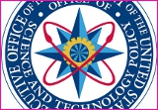 We can do better. That’s the bottom-line assessment of STEM education in the U.S. by John P. Holdren, the former Harvard physicist who now directs the Office of Science and Technology Policy, making him President Obama’s chief science advisor. “Too many of our children, particularly too many of our girls and minorities, are steering away from science and engineering, and we’re trying to address that.”
We can do better. That’s the bottom-line assessment of STEM education in the U.S. by John P. Holdren, the former Harvard physicist who now directs the Office of Science and Technology Policy, making him President Obama’s chief science advisor. “Too many of our children, particularly too many of our girls and minorities, are steering away from science and engineering, and we’re trying to address that.”
Read More
Filed under: K-12 Education News | Comments Off on Get Students Doing, Science Chief Says
Tags: Education Policy, Girls Education, Minority Group Students, Public Policy
 The Website of the Office of Oceanic and Atmospheric Research, or NOAA Research, has helpful information for teachers on oceans, Great Lakes, and coasts, climate, and weather and air quality, including a page of education resources, and an 18-minute video, “Dynamic Science,” that explains the work of the National Office. Bring students to the site to read about ocean mapping, the tsunamic research program, and NOAA’s work with hydroculture and fisheries.
The Website of the Office of Oceanic and Atmospheric Research, or NOAA Research, has helpful information for teachers on oceans, Great Lakes, and coasts, climate, and weather and air quality, including a page of education resources, and an 18-minute video, “Dynamic Science,” that explains the work of the National Office. Bring students to the site to read about ocean mapping, the tsunamic research program, and NOAA’s work with hydroculture and fisheries.











 Southeast Coastal Ocean Observing Research Association (SECOORA) provides several resources for educators and students, including videos of interviews with scientists, posters, activities, glossaries, virtual models, surveys, links to outside web resources, a hurricane tracking chart, a matching game, PowerPoint presentations, class materials, real time data, a teacher workshop, a research cruise, lesson plans, and more.
Southeast Coastal Ocean Observing Research Association (SECOORA) provides several resources for educators and students, including videos of interviews with scientists, posters, activities, glossaries, virtual models, surveys, links to outside web resources, a hurricane tracking chart, a matching game, PowerPoint presentations, class materials, real time data, a teacher workshop, a research cruise, lesson plans, and more. The ocean’s awesome power is never more apparent when the surf’s up or a coastal storm is brewing. But did you know that engineers are busily seeking ways to harness that might as a means for producing alternative sources of energy? Here is an overview of three different projects, compiled from recent news items in ASEE’s Prism magazine.
The ocean’s awesome power is never more apparent when the surf’s up or a coastal storm is brewing. But did you know that engineers are busily seeking ways to harness that might as a means for producing alternative sources of energy? Here is an overview of three different projects, compiled from recent news items in ASEE’s Prism magazine. Woods Hole Oceanographic Institution‘s hybrid, remotely operated vehicle
Woods Hole Oceanographic Institution‘s hybrid, remotely operated vehicle  A recent survey of 1,000 students ages 12 to 17 conducted for Junior Achievement and the Allstate Foundation found that 63 percent of respondents admitted that tight finances have forced them to change their college plans. How? By working more hours, opting for instate schools, delaying enrollment for a year or going to a community college.
A recent survey of 1,000 students ages 12 to 17 conducted for Junior Achievement and the Allstate Foundation found that 63 percent of respondents admitted that tight finances have forced them to change their college plans. How? By working more hours, opting for instate schools, delaying enrollment for a year or going to a community college. We can do better. That’s the bottom-line assessment of STEM education in the U.S. by John P. Holdren, the former Harvard physicist who now directs the Office of Science and Technology Policy, making him President Obama’s chief science advisor. “Too many of our children, particularly too many of our girls and minorities, are steering away from science and engineering, and we’re trying to address that.”
We can do better. That’s the bottom-line assessment of STEM education in the U.S. by John P. Holdren, the former Harvard physicist who now directs the Office of Science and Technology Policy, making him President Obama’s chief science advisor. “Too many of our children, particularly too many of our girls and minorities, are steering away from science and engineering, and we’re trying to address that.”